Mold And Wheatgrass: The Ultimate Guide
Wheatgrass sprouting has become mainstream thanks to the high nutritional content in this superfood. This is partly due to the ease of growing it both indoors and outdoors. However, one issue plagues every wheatgrass grower: mold.
Young sprouts produce fuzzy root hairs which have an almost similar appearance to mold. As a result, most growers shrug it off until the growing infestation becomes more noticeable. We are here to make things easier, this guide will delve into what causes mold to grow on wheatgrass, how to spot it, and finally, how to prevent it from happening.
What Is Mold?
Mold is a category of fungal culture that has a distinctively fuzzy texture that's formed by tiny hair-like filaments otherwise known as hyphae. Mold comes in different colors and shapes depending on the specific variety of fungi culture that has infested your wheatgrass.
What Is Wheatgrass?
Wheatgrass refers to freshly sprouted wheat shoots, which are 6 to 10 days old. The sprouting process kicks off with a 12-hour prolonged activation soak, followed by regular rinsing and draining every 8 to 12 hours. After the seeds are soaked for the first time, the germination process begins, which results in nutrients increasing as the stored nutrients get broken down into simple molecules.
Is Mold On Wheatgrass Dangerous?
The determination of whether wheatgrass is dangerous depends on the specific type of mold growing on the sprouts. The harmless non-pathogenic mold varieties have a fuzzy blue-green color. This variety does not penetrate into the wheatgrass and it can be washed off and the wheatgrass consumed. Ref: inspectapedia.com.
White mold is another common variety whose spores are often flying around in the air. Once they land on your wheatgrass, they will grow white cotton-like patches of mold. The patches cling like a net around the lower part of the wheatgrass stalks. This type of mold is considered to be harmless as it doesn't penetrate the wheatgrass stock and can be easily washed away under running water. Ref: libretexts.org.
Brown mold on the root system is also common, and it can vary to a yellowish fuzz. This variety of mold is considered to be harmful as it penetrates the wheatgrass sprouts and eventually leads to rot. Wheatgrass sprouts that have been infested with this mold variety should be disposed of, and the sprouting equipment sanitized to eliminate any spores, which might cause reinfection in future sprouts. Ref: inspectapedia.com.
Causes Of Mold Growth On Wheatgrass
1. Lack Of Proper Drainage
Mold thrives in wet conditions and it will contaminate wheatgrass sprouts that are kept in poorly drained surfaces. Regular rinsing followed by proper drainage ensures that any mold spores present get flushed away with each rinsing cycle. If you are growing wheatgrass outside on the soil, ensure that it's well-drained as well.
2. Lack Of Proper Ventilation
Spores released by mold are more likely to land on wheatgrass and thrive if the microgreens are stored in stagnant air. Exposing the sprouts to proper air circulation provides them with the required gases and also reducing stagnant humidity, which causes mold growth.
3. Contamination From Previous Projects
Wheatgrass that's grown on unclean surfaces and sprouting equipment stands a higher chance of getting contaminated with fungi culture that may have been left behind from previous projects. It's important to remember that the mold spores are so tiny that they cannot be seen with the naked eye and can, therefore, be present on any surface even if it looks clean.
4. Cross-Contamination
Cross-contamination occurs when you have ongoing projects that rely on bacterial and fungal cultures, such as fermentation projects. When such sources of contamination are kept in the same room with sprouting projects, there's a high risk that some of the spores will float away and settle on the growing microgreens and contaminate them.
5. High Humidity
High humidity provides an excellent environment for mold spores to grow and infest nearby plants. When growing wheatgrass indoors, it's recommended keeping the indoor humidity at a relatively low setting of about 30 to 50 percent. Having a less humid environment also causes the spores to dry up, thus destroying them.
How To Spot Mold
What Does It Look Like?
The color of the mold depends on the specific variety, which has infested your wheatgrass. Pathogenic varieties that can penetrate your sprouts and cause rotting have a fuzzy brownish color with noticeable black splotches. Harmless varieties are often white, blue, or greenish in color and are easily washed off.
What Shape Is It?
Mold typically grows in clumps around the wheatgrass shoot or forms circles and rings in between and around the roots of the young microgreens. Hair like structures that intertwin like a mesh can also be seen growing if the mold has developed a network of mycelia.
What Texture Is It?
The texture of mold will vary depending on the variety, with most having a soft, fluffy texture that's almost velvety. The texture of mold makes it easier to tell it apart from sprout roots, which are tiny and soft but will retain their shape when pressed.
What Does It Smell Like?
Generally, mold has an unpleasant smell that's reminiscent of wet socks and rotten wood. Mold spores have an earthy scent, and they often trigger allergies, so be careful when handling the mold if you are asthmatic. Brown mold usually eats into the wheatgrass leading to rot, which is often accompanied by an acrid smell.
What To Do If You Get Mold On Your Wheatgrass
When you discover brown mold growing on your wheatgrass, you should throw out the entire tray of wheatgrass. This is because the mold is pathogenic and can harm you if consumed. The sprouting tray and all other equipment that may have come into contact with the mold contamination should be sanitized using distilled vinegar or concentrated alcohol.
Can You Eat It?
It's not advisable to eat wheatgrass which has been contaminated with brown mold. Blueish and greenish mold can easily be washed away as they are nonpathogenic varieties, and the wheatgrass can be consumed after washing.
What Should You Do?
If you notice pathogenic mold growing on your wheatgrass, you should dispose of the contaminated batch and disinfect the equipment used. Nearby projects should be sprayed with diluted hydrogen peroxide to kill any spores that may have already been produced by the mold.
Can You Remove It?
Yes, it's possible to remove slime mold that's nonpathogenic and reclaim the infected wheatgrass. This can be done by either physically removing the strings of mold followed by a gentle wash using running water. Alternatively, you can use a spray bottle to spray diluted hydrogen peroxide on the mold, which will effectively kill off the mold before you harvest the wheatgrass.
How To Prevent Mold Growth On Wheatgrass?

Sterilizing Equipment Beforehand - The sprouting equipment used to grow wheatgrass should be sterilized beforehand so as to kill any spores of mold before the entire sprouting process begins. Some seeds are usually sold contaminated with mold; these can be sterilized by dipping them in 50% hydrogen peroxide mixed with 50% filtered water and white vinegar. Practicalgrowing.com recommends dipping the seeds in the mixture for 3 minutes before soaking them.
For References And More Information Check Out: practicalgrowing.com
Growing Wheatgrass within Optimal Temperature - Growing wheatgrass within the range of 60 to 80 °F (15- 35 °C) ensures that they not only grow fast but also prevent mold from growing fast. This temperature range also enhances the faster evaporation of water, which helps reduce the growth of mold.
Reducing Humidity - Reducing the humidity in the growing area will effectively reduce the spread of mold. This is because mold thrives in humid conditions, and moisture is required to sustain the culture. If you are growing your wheatgrass indoors, you can adjust the air conditioner to fill the room with dry air.
Increasing Air Circulation - Proper air circulation reduces humidity and also serves to blow away mold spores. Growing your wheatgrass outdoors in the open will effectively deal with any air circulation issues. If you are growing the wheatgrass indoors, it is recommended to leave the windows open if the temperature outside isn't extreme. Alternatively, you can get an air fan to keep the air circulation on the optimal side.
Proper Drainage - Properly draining the growth medium, whether its soil or cotton wool, will ensure that mold has a lower chance of surviving. This is because mold requires a constant supply of moisture in order to thrive.
Can Cats Eat Moldy Wheatgrass?
No, cats should not be fed moldy wheatgrass as it might be pathogenic, which is harmful to the cat.
What To Do If Your Cat Has Eaten Moldy Wheatgrass?
If your cat has somehow ended up eating moldy wheatgrass, you should contact your vet immediately.
Mold And Wheatgrass Products
Type Of Wheatgrass |
How Does the Mold Look Like? |
Can You Consume It? |
How To Prevent |
Wheatgrass Juice |
Wheatgrass juice mold usually forms small rings or circles on the surface of the juice during storage |
No, dispose of the entire bottle as its all contaminated |
Thoroughly rinse the wheatgrass before juicing to wash off any mold spores |
Wheatgrass shots |
Wheatgrass shots mold forms circles and rings on the surface of the liquid |
No, dispose of the entire bottle as its all contaminated |
Ensure that the wheatgrass microgreens are well rinsed before juicing |
Cut Wheatgrass |
Cut wheatgrass mold is mostly in the shape of a slimy mass of interconnected threads growing around the wheatgrass stocks |
Yes, non pathogenic mold can be easily washed away |
Spray the growing wheatgrass with diluted hydrogen peroxide a week before harvest to kill any mold that might be present |
Frozen Wheatgrass |
Mold growing on frozen wheatgrass will form rings and circles on the surface |
No, frozen wheatgrass should not develop mold, if it does that's an indication that it's been contaminated and should, therefore, be disposed |
Ensure that the wheatgrass is well rinsed and dried before being moved into frozen storage and that it should be kept under constant frozen temperatures |
Common Questions
How Do You Kill Mold On Wheatgrass?
The mold that's growing on wheatgrass can be killed by spraying it with a bottle of 50% diluted hydrogen peroxide once per week.
For References And More Information Check Out: practicalgrowing.com
How Do You Keep Mold From Forming?
Mold can be kept from forming on wheatgrass by maintaining constant air circulation, using a well-drained sprouting medium, and reducing the humidity level.
Why Is Wheatgrass Bad For You?
Wheatgrass is categorized as a high-risk food due to the possibility of contamination with harmful bacteria occurring during the sprouting process.
What Are The Side Effects Of Wheatgrass?
Some of the side effects of wheatgrass include nausea, headache, upset stomach, and fever.
Is Wheatgrass Mold Dangerous?
Yes, pathogenic mold may cause food poisoning and respiratory irritation.
How Do You Get Rid Of Wheatgrass Mold?
Wheatgrass mold can be washed away under running water, or you can spray the wheatgrass with diluted hydrogen peroxide to eliminate the mold.
How Do I Get Rid Of Mold In My Grass?
If you have determined that the mold is nonpathogenic, you can proceed to wash it away.
How Do You Keep Microgreens From Molding?
Microgreens should only be grown under sanitized conditions and with free air circulation and a well-drained medium in order to prevent molding.
Why Is My Fodder Molding?
Wheatgrass develops mold if it is kept in poorly drained conditions with high humidity and stagnant air.
Can You Grow Wheatgrass Without Soil?
Yes, wheatgrass can be grown on other mediums other than soil, such as cotton wool and coconut coir.
How Do You Prevent A Hydroponics Fungus?
Flush the hydroponics with a hydrogen peroxide solution, which will effectively eradicate any fungus and mold that might be growing.
For References And More Information Check Out: practicalgrowing.com


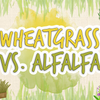
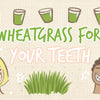
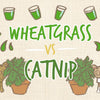
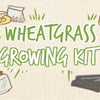
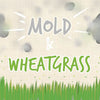

Thank you for this comprehensive article. It is a very frustrating topic and especially when you’re just getting started. My reliability must be spot on now with several steady clients.
What everyone has to understand is that spores are everywhere and on everything. Having a clean and climate controlled environment is just the start. Keeping it that way for every batch is the work most cannot keep up with and it’s definitely a practice.
Growing the grass and microgreens is the easy part. Consistency is the practice.
If I use diluted hydrogen peroxide to control mold growing in wheatgrass like suggested, will it be harmful to pets who eat the grass?
I’m going to buy some organic soil for growing wheatgrass for shots. What brand of soil is best for growth and drainage?
Thank you